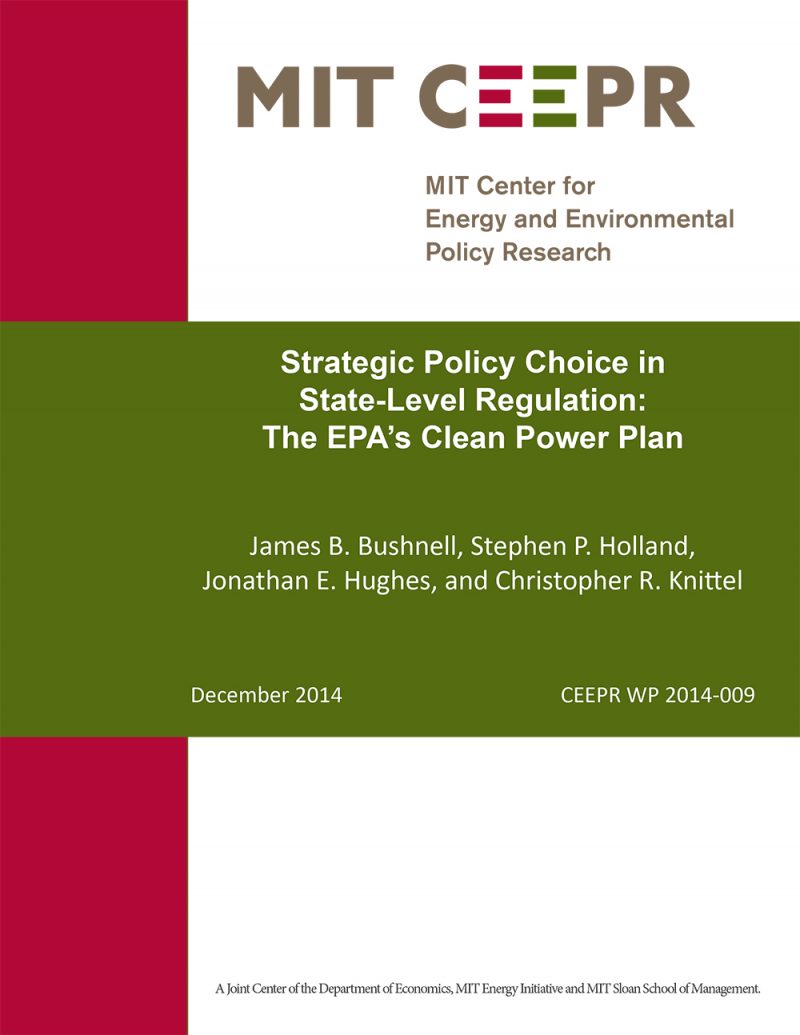Strategic Policy Choice in State-Level Regulation: The EPA’s Clean Power Plan
James B. Bushnell, Stephen P. Holland, Jonathan E. Hughes, and Christopher R. Knittel
November 2014
Flexibility in environmental regulations can lead to reduced costs if it allows additional abatement from lower cost sources or if policy tailoring and experimentation across states increases regulatory efficiency. The EPA’s 2014 Clean Power Plan, which implements greenhouse gas regulation of power plants under the Clean Air Act, allows substantial regulatory flexibility. The Clean Power Plan sets state-level 2030 goals for emissions rates (in lbs CO2 per MWh) with substantial variation in the goals across states. The Clean Power Plan allows states considerable flexibility in attaining these goals. In particular, states can choose whether to implement the rate-based goals or equivalent mass-based goals (i.e., emissions caps). Moreover, states can choose whether or not to join with other states in implementing their goals. Using a model of electricity generation across states, we analyze incentives to adopt inefficient rate-based standards versus efficient mass-based standards. We show that adoption of inefficient rate-based standards is a dominant strategy for states from both a consumer’s and a generator’s perspective. We calibrate the model for electricity markets in the Western United States and calculate significant inefficiencies from a failure to coordinate. In particular, state-by-state rate-based standards result in a substantial loss of welfare relative to business as usual. Even a harmonized West-wide rate-based standard dissipates a substantial proportion of the potential gains from regulation. Despite these large inefficiencies, the incentives for adoption of the inefficient policies are substantial particularly for generators.



